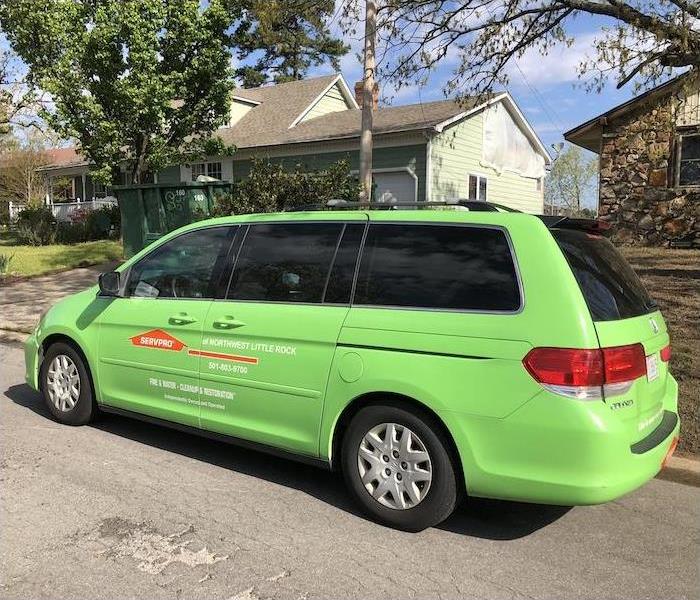How Little Rock Residents Can Spot Hidden Signs of Water Damage
4/17/2023 (Permalink)
 We have the equipment and training to restore your Little Rock home to pre-damage condition after water damage strikes.
We have the equipment and training to restore your Little Rock home to pre-damage condition after water damage strikes.
SERVPRO Water Mitigation Experts are On-hand to Help in Little Rock
Water migration is a process that occurs when liquids move from one area to another, from wet to dry. Migration can happen in the wet rooms of your home from washrooms, kitchens, or showers. Usually, these rooms are specially sealed and incorporate dense materials like porcelain or tiles to protect against moisture migration. In some situations, the sealant can wear, leading to ceiling leaks and wall and decor damage.
Timely intervention with professional restoration services can prevent water damage in your Little Rock home. A leak does not always result in liquid dripping from ceilings or walls. Sometimes, discoloration of paintwork can indicate a problem in the washroom above. These types of damage are usually the direct result of deterioration in the building's assembly or plumbing system and do not go away by themselves. It is common for local homeowners to use SERVPRO technicians to help diagnose and remedy the issue. Our technicians have qualifications for water damage restoration (WRT) and applied structural drying (ASD). We understand how moisture can move through a building and the type of damage it causes. We are also well versed in the structure of a home, with the ability to investigate the likely source of an issue and fix potential damage.
The Causes of Persistent Leaks in your Home
- Deterioration in tiles can allow liquid to seep through cracks in the grout or the tiles themselves. Resealing tiles is home maintenance that should be carried out every two years.
- Jointing between showers and the floor can also deteriorate, which leads to moisture migration every time you run the shower causing water damage.
- Slow leaks in sink and drainage architecture usually occur at joints of pipes and can cause a permanent problem in your home.
If wetrooms in your home are not maintained or resealed every two years, there is a chance of moisture seeping through the grout and residing behind tiles. Most tiles are fixed to drywall or gypsum board which can rot away with persistent exposure to moisture. Worse yet, excessive quantities can leak into cavities between walls and floors, leading to dripping from ceilings and increasing the possibility of weakening the property's structural integrity. One method we use to find the source of a moisture problem is through advanced measuring equipment. Most materials used in a building assembly have an equilibrium state of moisture content measured in a percentage. Lumber, for example, has an equilibrium balance of 12%. Drywall can vary from 5% to 12% while still being in the equilibrium range.
We use sensors and meters to detect the exact moisture content of building materials accurately. Some measuring equipment uses penetrative probes. Other equipment measures the temperature of the surface to calculate the likelihood of unbalanced moisture content. Since tiles can be time-consuming to remove, SERVPRO can use thermal imaging cameras to ascertain whether there is a leak or other cause for concern residing behind the tiles before taking action. If there is a cause for concern, our team can use drying systems specifically designed for home use. These drying systems mainly involve pumping heated, dry air into cavities of the home to evaporate water quickly, which is the most effective mitigation against mold growth, rot, or permanent damage.
Common Drying Systems Used in Residential Properties
- Air movers blast a direct and concentrated passage of hot air directly against surfaces or cavities and are much more effective than traditional fan ventilation systems.
- Injectidry systems enter wall cavities through small holes drilled beneath the baseboards of walls and circulate warm air to remove traces of moisture.
- Technicians can safely demolish non-salvageable drywall before deploying powerful venting fans to dry out cavities and building framework.
If you notice any typical symptoms of a leak in your home, contact SERVPRO of Little Rock for water damage restoration at (501) 803-9700.






 24/7 Emergency Service
24/7 Emergency Service